What are Responsive Search Ads?
Responsive Search Ads are text ads that allow PPC marketers to create multiple headlines and descriptions that are tested over time by Google’s machine learning and turned into relevant ads customized for the end-user based on their search query.
They were introduced in 2018 as a way to help advertisers find the winning combination of headlines and descriptions for effective text ads.
How do Responsive Search Ads work?
You create a bunch of different text components (a maximum of 15 headlines and 4 descriptions) and Google finds the best combination and serves ads to the end-users that lead to the highest CTR and best conversion rates.
The more headlines and descriptions you provide, the more combinations it can generate.
Responsive Search Ads Examples
Here’s an example of a Responsive Search Ad. On the left, there are 10 headline variations and 3 different descriptions. On the right, you see a couple of possible ad combinations.
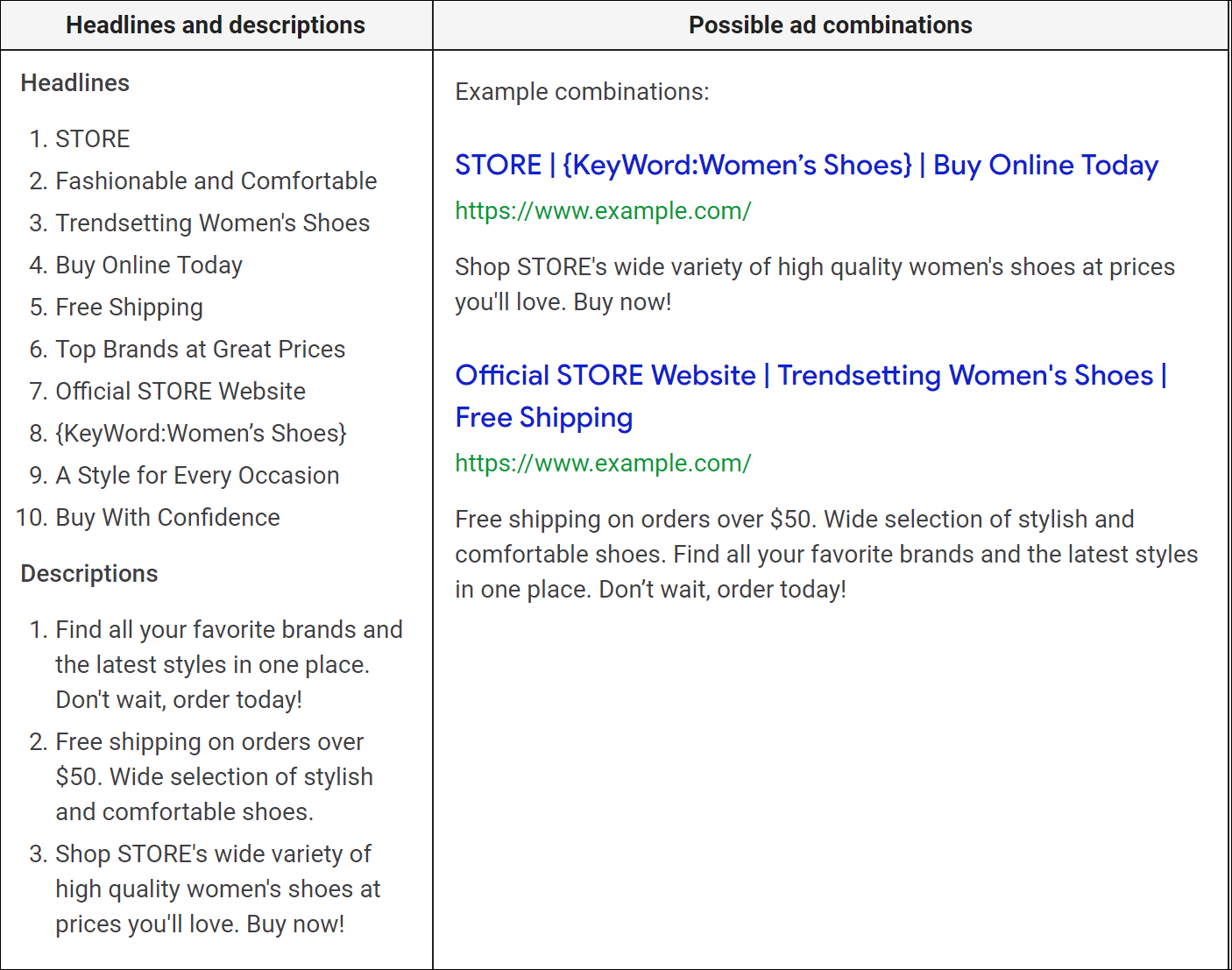
Source: Google
Keep in mind that headlines and descriptions may appear in any order.
Initially, there’s a learning period for any new RSA, which means performance may not be what you’re used to right away. But once Google finds the best combination, you can see great results.
Responsive Search Ads Best Practices
1. Know the difference between ad strength and asset labels.
Ad strength is a best-practice score that measures the relevance, quantity, and diversity of your Responsive Search Ad content even before your RSAs serve.
Every increase in ad strength provides approximately a 3% click uplift e.g. poor to average, average to good. However, it has no relation to performance.
Asset labels, on the other hand, give you guidance on which assets are performing well and which ones you should replace after your RSAs serve. These suggestions from Google are based on performance data, so if one of your assets doesn’t get impressions in 2+ weeks, you might want to replace it.
2. Start finding the pieces of your new Responsive Search Ads.
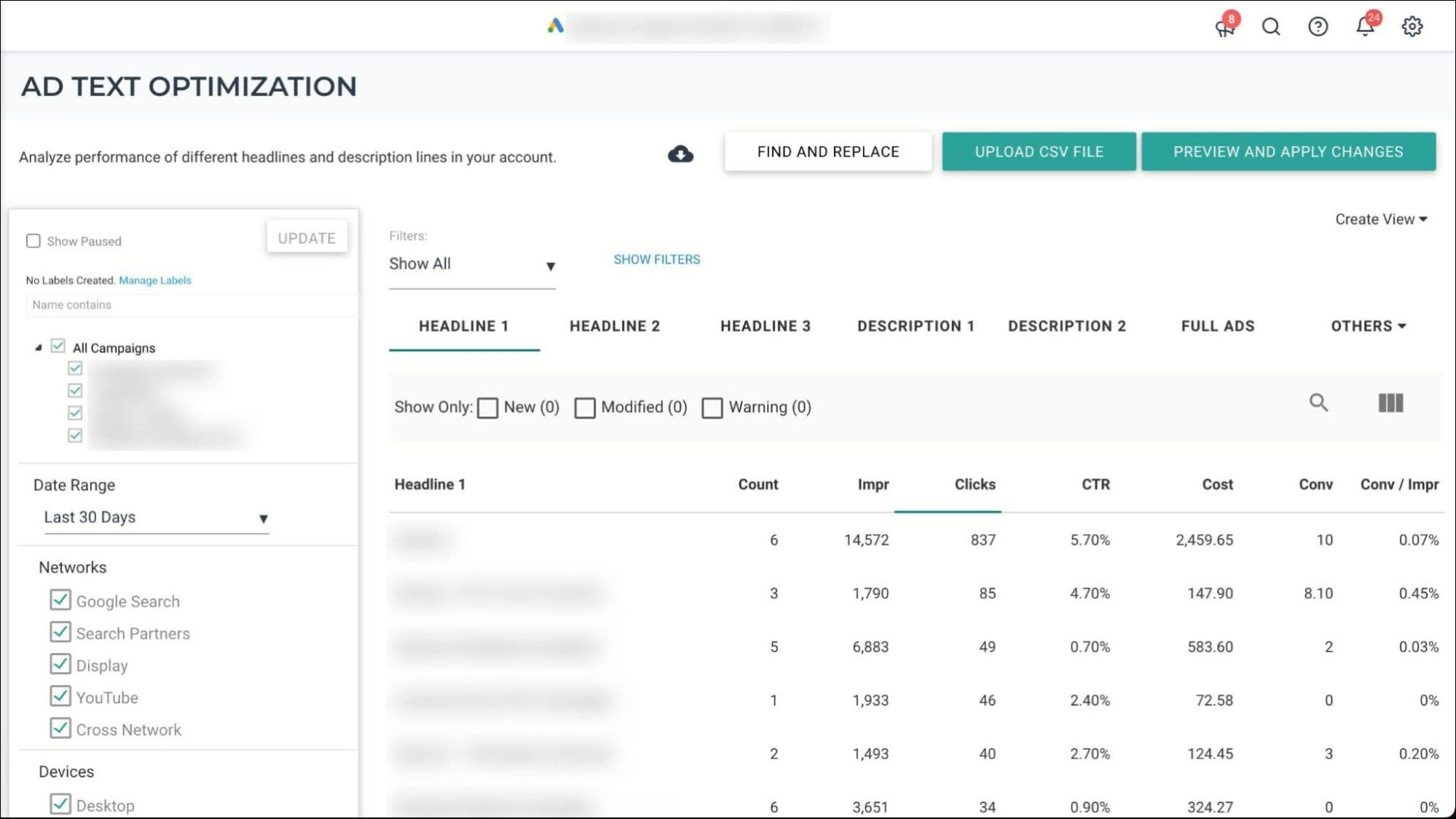
Ad Text Optimization lets you quickly find the best-performing text in your account
If your campaigns have been running for some time, there’s a good chance that you already have some quality RSAs floating around in different ad groups. It’s finding these individual components that can prove time-consuming and error-prone.
A tool like the Ad Text Optimization in Optmyzr can make light work of that, allowing you to sort through single or multiple campaigns in minutes.
It allows you to sort by element type (headline, description, path), individual placement, or even full ads to find the best-performing elements for the desired metric.
Once you have your ad text ready, you can bring the process full circle:
- Build a new ad with our Responsive Search Ad Utility
- Monitor the performance of RSAs and make necessary changes to ensure they are performing at their best using Ad Text Optimization (read help article here)
- Migrate your existing ETAs to RSAs quickly using our free script
- Use our Rule Engine strategy to Find and Fix Underperforming RSAs
- Validate your findings in the AB Testing for Ads tool
3. Consider variety in your Responsive Search Ads.
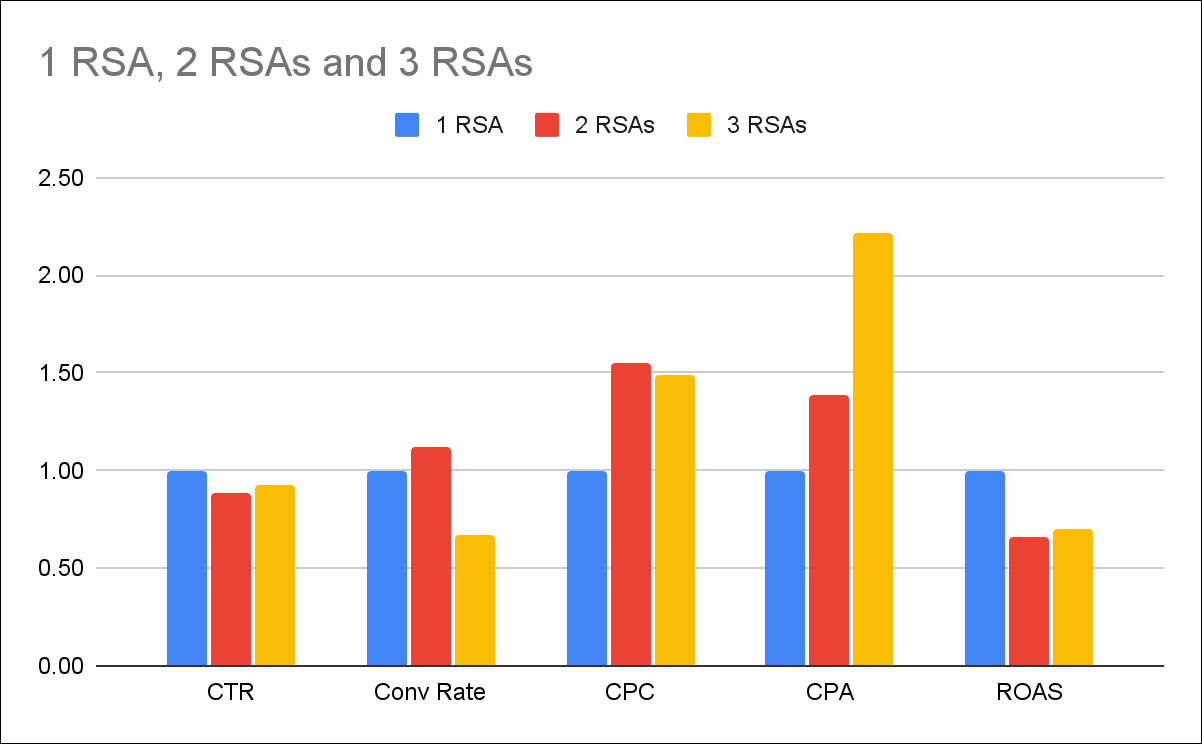
Key metrics for RSAs vary by the number of ads in an ad group.
While you can create up to three Responsive Search Ads in one ad group, it’s difficult to find a consensus on the optimal number.
On the one hand, too many RSAs can dilute your messaging variations – especially if each one carries the full 15 headlines and four descriptions. But limiting yourself may not always be the right move either, assuming each RSA is distinct in terms of what it addresses.
The findings from our study show that ad groups with more RSAs tend to get significantly more impressions, but ad groups with two RSAs experience a surge in conversion rate that single-RSA and three-RSA ad groups don’t.
Having 2 RSA ads per ad group seems to be the sweet spot mostly based on improved conversion rates
As always, consider the merits of every situation and ad group individually.
4. Decide whether to pin elements in your Responsive Search Ads.
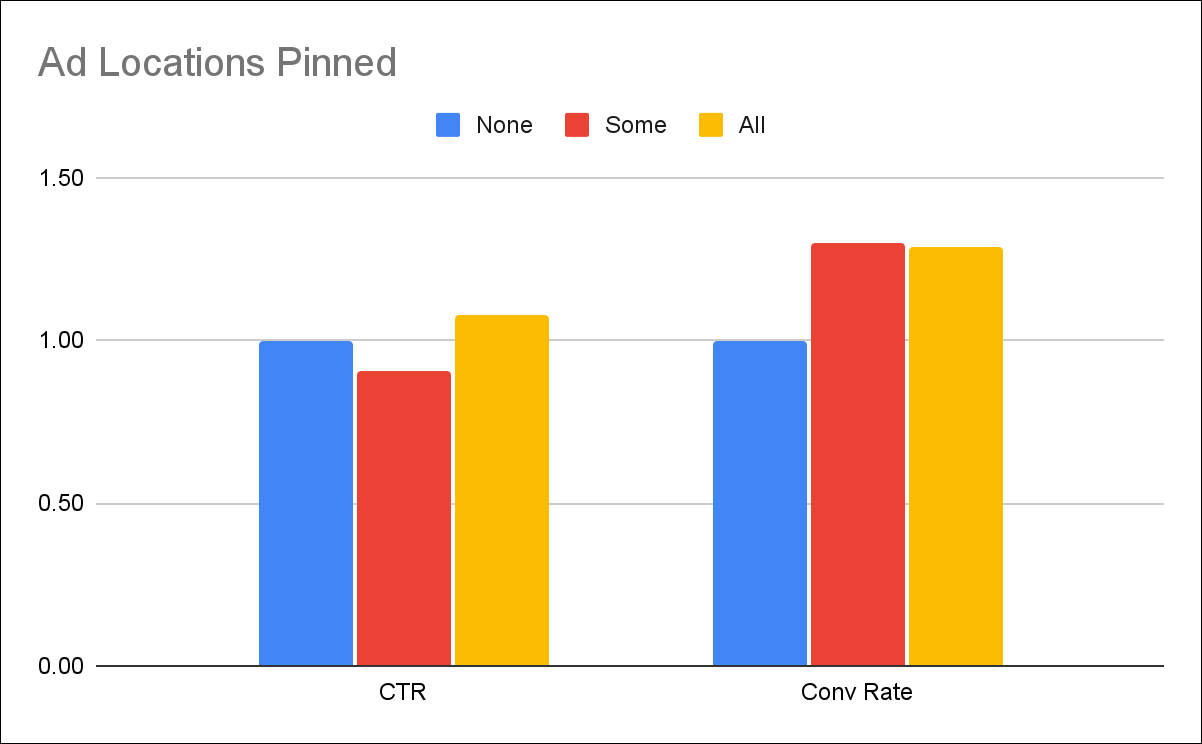
Google identifies excessive pinning as one of the 8 causes of weakened RSA ad strength, and while it’s not clear at what threshold this changes, it’s safe to say that your results will get weaker the more elements you pin.
However, some advertisers will need to pin specific pieces of text, such as disclaimers and warnings for those in legal or pharmaceutical advertising. Google is yet to comment on whether these industries with obligations will be assessed differently, or whether a new element will be made available to cater to this need.
For now, advertisers will have to do what they must with what they have access to. Just reconsider if you’re thinking about gaming the system by pinning all your elements to create a pseudo-Expanded Text Ad.
5. Change how you think about A/B testing with RSAs.
The methodology of A/B ad testing has long been premised on the assumption that impression volume is determined primarily by keywords and is only minimally dependent on the ad. This assumption is false with Responsive Search Ads.
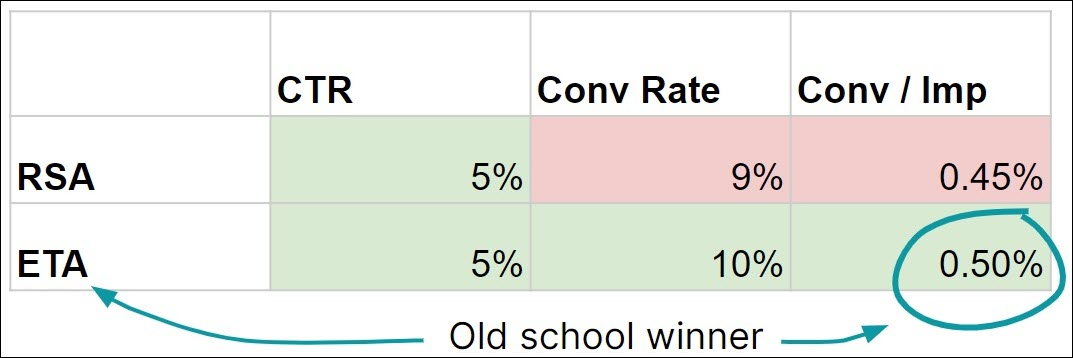
Old Way: Focused on conversion rates or conversions per impression
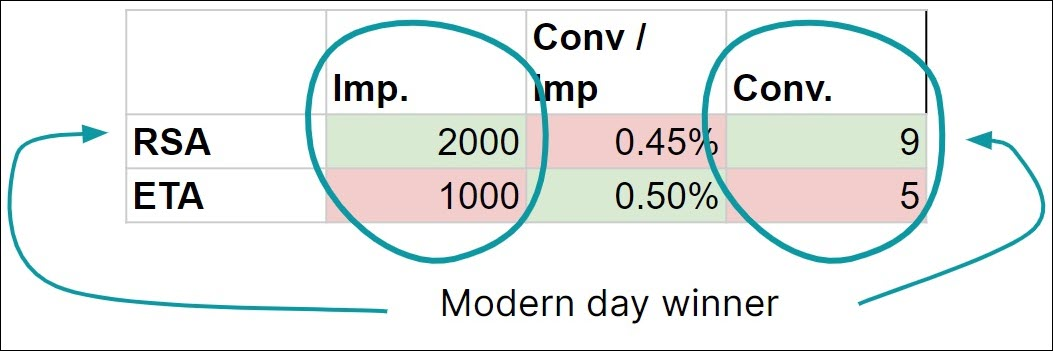
New Way: Focused on conversions within CPA or ROAS limits
6. Take out a PPC insurance policy with automation layering.
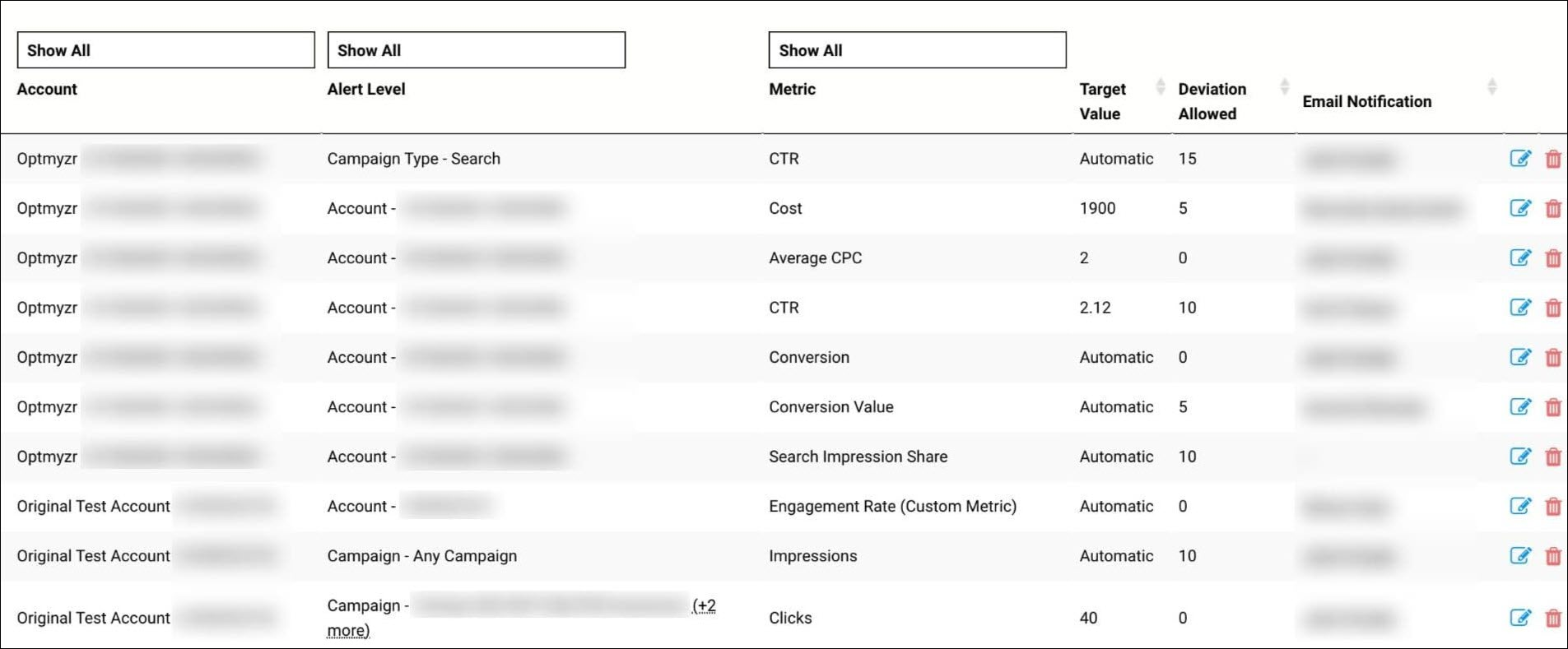
Image: A list of active alerts at multiple levels in Optmyzr
Maybe you’ve had success with your search campaigns by determining large parts of their optimization strategies, or maybe you’ve been using automated bidding strategies in tandem with solidly built Expanded Text Ads that you control.
Performance Max in itself is not a direct threat to your account – you can always opt out of them.
However, the double whammy of switching to Responsive Search Ads and running a Performance Max campaign together can be a risk for all but the most insulated PPC accounts. We suggest tackling one at a time.
Even then, the more Google automates its platform, the more vital it becomes for you to have a layer of automation working for the benefit of your account. A tool like Optmyzr makes that all the more possible – and effective.
Optmyzr Study On Responsive Search Ad Performance
Our 2022 study of RSA performance covers 13,671 randomly chosen Google Ads accounts in Optmyzr and answers questions like:
- Is RSA usage as common among advertisers as you think?
- How does RSA performance compare to that of ETAs?
- What effect do pinned headlines/descriptions have on performance?
We’ve presented the results by category so you can quickly find what’s most relevant to your goals.
Watch our CEO, Frederick Vallaeys present the study on PPC Town Hall below.
“What our study shows is that impressions for an ad group are highly dependent on the ad, and RSAs drive 4x the impressions of a typical ETA. Even with a slightly lower conversion rate, this 400% lift in impressions nets a lot of incremental conversions that should make advertisers very happy.”
Responsive Search Ads have a better auction-time Quality Score, so they help you qualify for more auctions. They also boost ad rank and give you access to entirely new search terms (and impressions). As a result, ad-level performance and metrics like click-through or conversion rate may not paint a full picture of your performance.
Evaluate the success of your ads based on the incremental impressions, clicks, and conversions your ad groups and campaigns receive.
Here’s the link to the full study
Ad Strength for Responsive Search Ads
If you’re a PPC Advertiser you’re certainly no stranger to scores in your ads account, for example, quality score or optimization score. With Responsive Search Ads (RSAs) replacing Expanded Text Ads, advertisers are now increasingly exposed to a type of score called Ad Strength.
So what is Ad Strength?
Google defines Ad Strength as follows:
Ad Strength provides you with feedback to help you focus on providing the right messages to your customers. It shows how well an ad creative follows the best practices for optimal performance, ranging from “Incomplete”, “Poor”, “Average”, “Good”, to “Excellent”.
Does Ad Strength matter?
Google states this is a best practice score and is intended to make a great first impression. This is an important choice of words and means it’s not learning from your actual performance. And while a good first impression matters, long-term results matter even more.
Ad strength uses a machine learning model that looks at which ad attributes tend to correspond to good outcomes for an advertiser. For example, will an advertiser who has 10 different variations of a headline perform better than a similar advertiser who has 15 different variations of the same headline?
Do ads that include the primary keyword of an ad group tend to have better performance than ads that do not include the same keyword?
Will ads with too many redundant phrases perform worse than those that avoid redundancy?
These are super helpful insights to get things started and we can all learn something from history’s lessons.
However, once you’ve got a good baseline ad, forget ad strength because while it reflects what has worked well for the masses in the past, it doesn’t care about what works for you. An advertiser whose ad with ‘poor’ ad strength starts to perform very well will still be labeled as ‘poor’.
Let me say that again. Ad strength does not change based on your performance!
Hence it’s possible advertisers with fantastic conversion rates, low CPAs, and tons of profits could have poor ad strength. They’re not following the general wisdom but they’re still successful. To think differently is not rewarded by this model.
So if you’re an experienced marketer there’s nothing wrong with creating an ad that you think will perform really well, even if it happens to have a poor ad strength according to Google’s predictions.
What matters much more, in that case, is close monitoring and methodical experimentation to make sure that the actual performance is reflective of what you believe the ad can achieve.
Does Poor Ad Strength Impact Ad Serving?
If you’re worried that poor ad strength means your ad will serve less frequently, rest assured that ad strength does not impact ad rank or quality score. In other words, if your ad strength is poor, it does NOT mean Google is deprioritizing your ad in the ad auction.
However, it is possible that your ad really is bad and will hence also get a low quality score and a lower ad rank in auctions. Correlation, not causation.
Part of the reason some people believe poor ad strength causes their ad to show less is that Google for a while labeled some ads as ‘poor (limited eligibility)’. This status was confusing and has since been removed.
However, should you pay attention to Google’s quality score and optimization score? Read more about them here.
Get the Most Out of Your Responsive Search Ads
At Optmyzr, we have a comprehensive set of tools built to help you easily manage the entire life cycle of your RSAs - from creation to analysis to optimization. Let’s look at the different tools and how they can help you build a foolproof RSA workflow.
Below is a detailed article that can help you create, optimize, and manage RSAs that can deliver the results you need to grow your business.
How to Create, Optimize, and Manage Google Responsive Search Ads
Responsive Search Ads: Frequently Asked Questions
What is pinning in RSAs?
Pinning means fixing headlines or descriptions to specific positions. Although it gives you more control over how your RSAs appear to users, it also reduces your ad strength, according to Google.
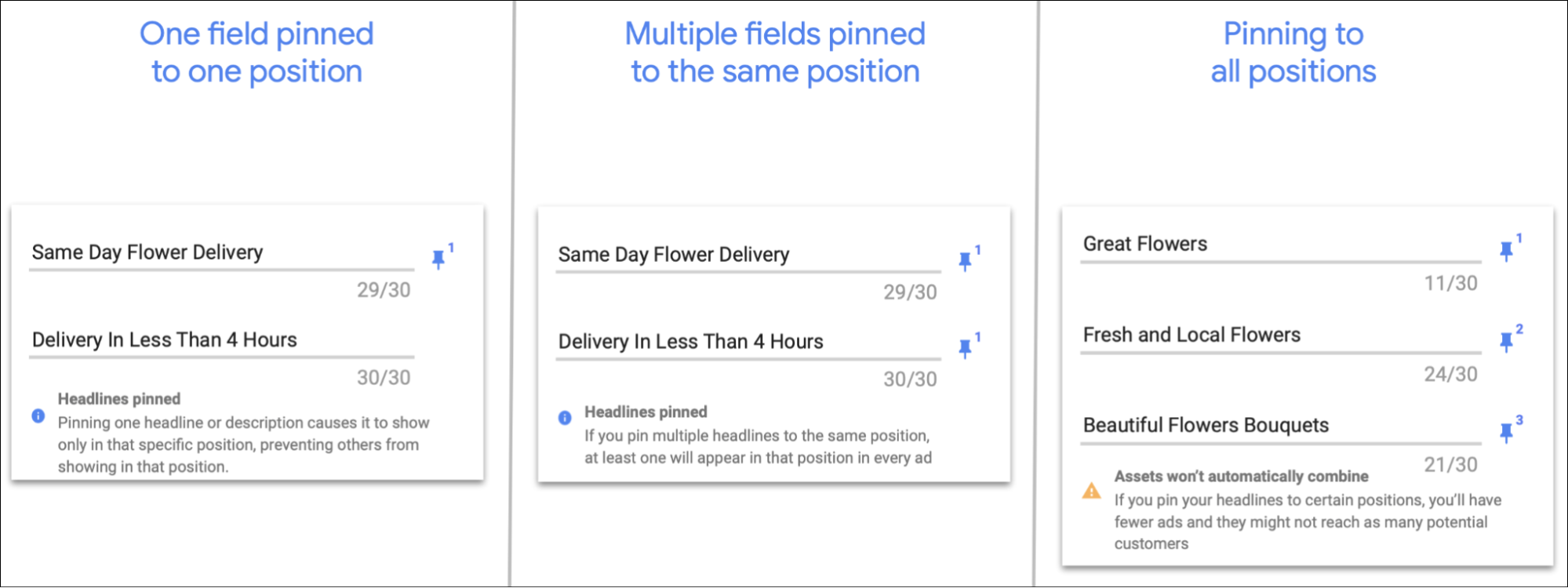
Should you pin your RSAs?
In our analysis of over 93,055 Responsive Search Ads, we looked at the impact of three ways to pin: no pinning, pinning only some ad positions, and pinning all ad positions.

We found that RSAs that pin every position have great metrics like CTR and Conversion Rate, which makes sense for advertisers who’ve done great A/B testing for years and have hyper-optimized ads.
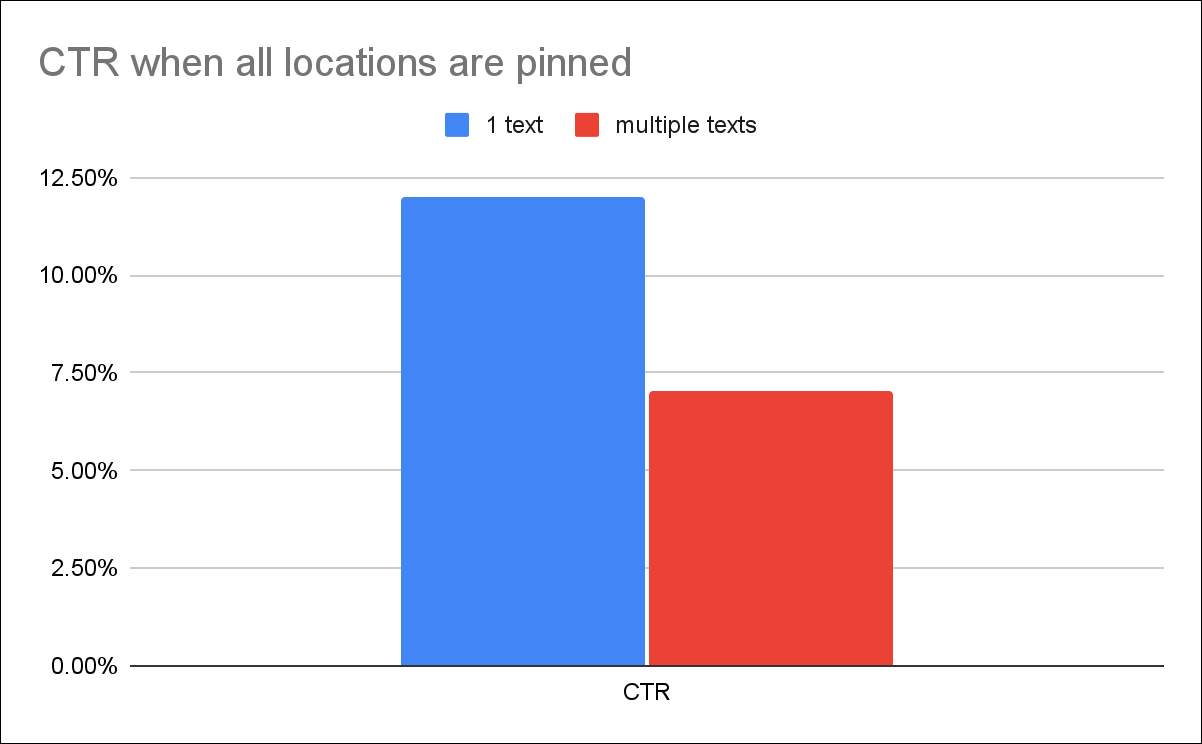
CTR is much better when pinning one text.
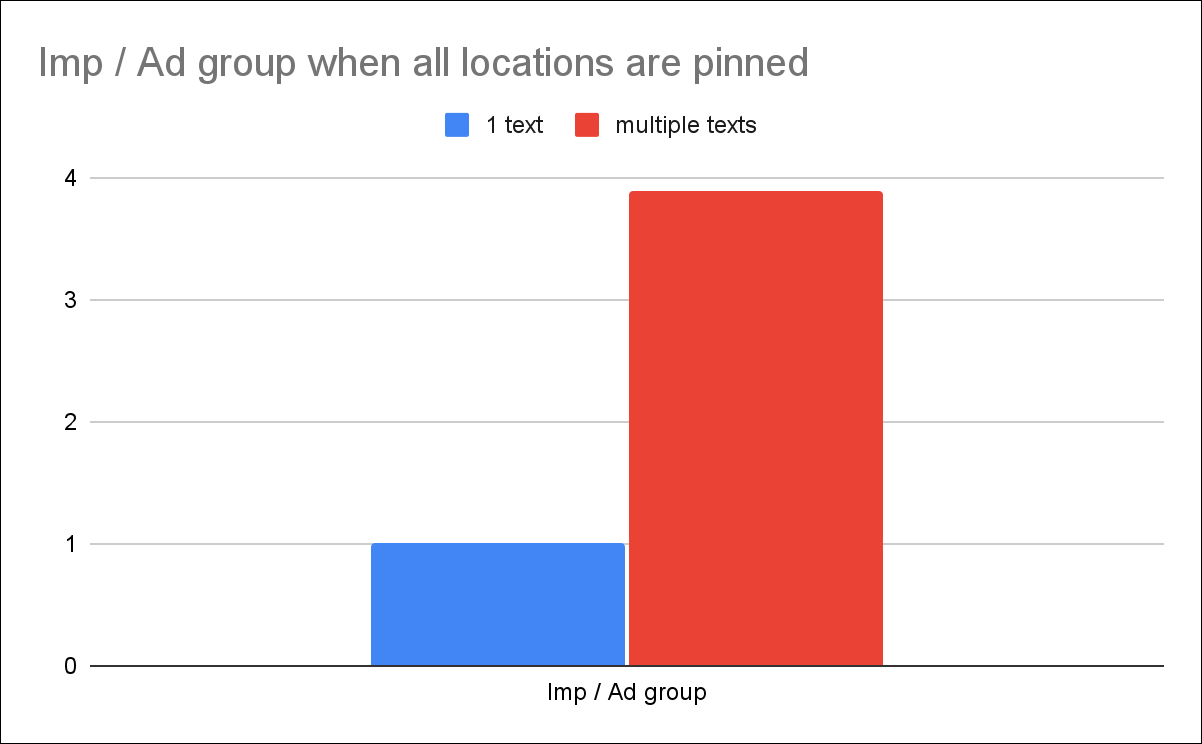
But impressions per ad group are 3.9 times higher when giving Google the flexibility with multiple texts per pinned location.
Optmyzr’s Interpretation: Advertisers who’ve spent several years optimizing their ETAs are creating “fake” ETAs by pinning one text at every position to recreate those strongest-performing ETAs.
